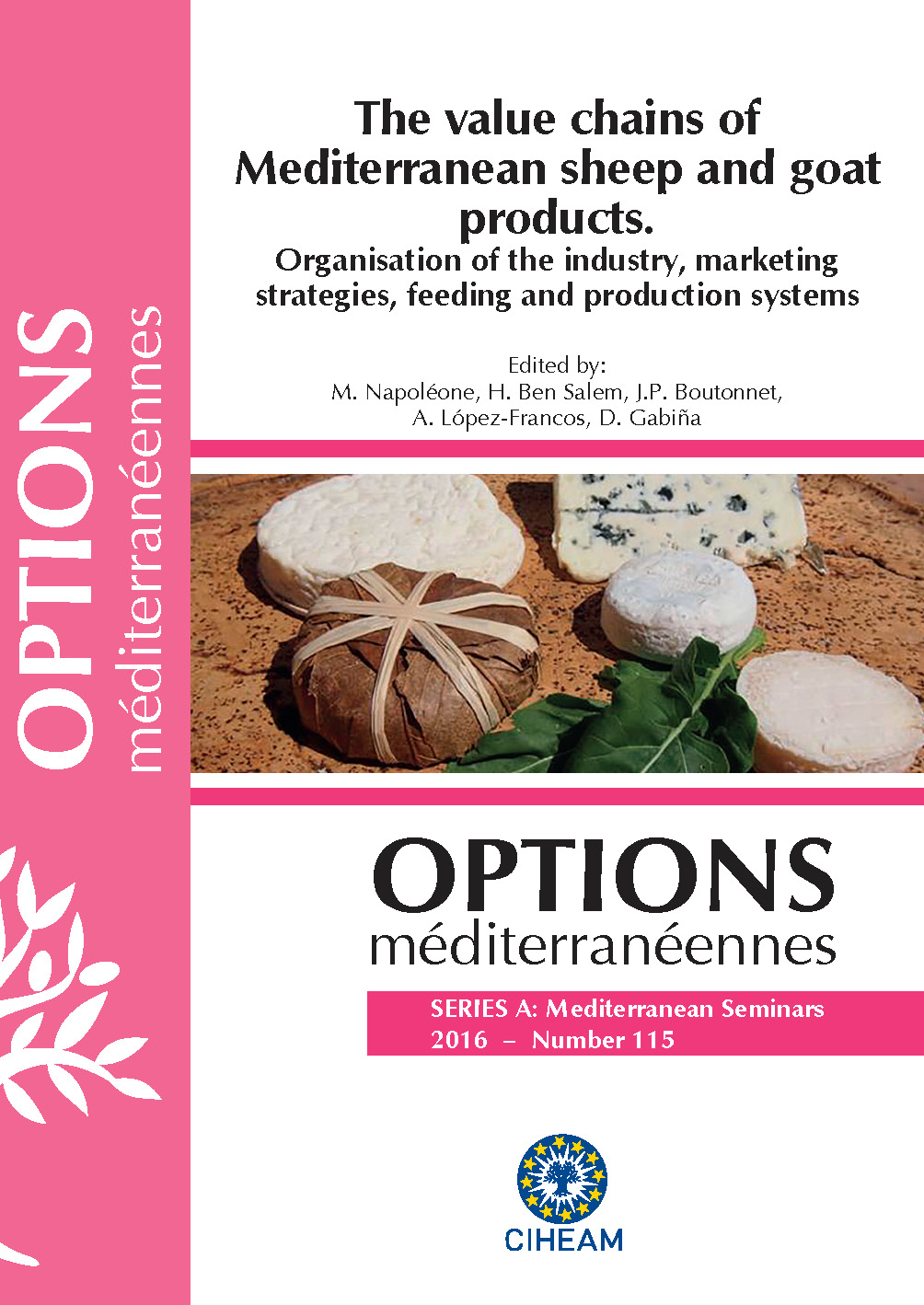| Article précédent | p. 603-607 | Article suivant |
Chemical composition of a Trifolium repens L. population in a grazed mountainous grassland in Central Greece
The purpose of this study was to evaluate the effect of grazing on the herbage production and on the nutritive value of a natural population of Trifolium repens L. in mountainous grassland.The research was conducted in Pindos mountain, in Central Greece in July 2013. Three plots of 9 m² each in the study area were fenced on 2012, in order to be protected from sheep grazing. Herbage production was measured in the grazed and fenced plots. Hand-plucked samples of Trifolium repens from the grazed plots and the protected ones were analyzed for crude protein (CP), neutral detergent fiber (NDF), acid detergent fiber (ADF), acid detergent lignin (ADL). Also, phenols (TPH), tannins (TT) and condensed tannins (CT) concentration were measured. As expected, the herbage production was significant higher in the protected plots (2350 kg DM/ha) compared to the grazed ones (957 kg DM/ha). The CP content of Trifolium repens was increased significantly in the grazed plots (183 g/kg DM) compared to the protected ones (142 g/kg DM). The NDF, ADF, ADL content and TPH and TT concentrations decreased significantly in the grazed areas compared to the protected ones. On the other hand, CT concentration was significantly lower in the protected plots (2 mg/g DM QE) compared to the grazed (5.7 mg/g DM QE). It seems that grazing ameliorates the nutritive value of Trifolium repens.
Le but de cette étude était d’évaluer l’effet du pâturage sur la production d’herbe et sur la valeur nutritive d’une population naturelle de Trifolium repens L. dans une prairie montagneuse. L’essai a été menée dans la montagne du Pinde, en Grèce centrale, en Juillet 2013. Trois parcelles de 9 m² chacune dans la zone d’étude ont été clôturées en 2012, afin d’être protégées contre le pâturage des moutons. La production de plantes fourragères a été mesurée dans les parcelles pâturées et dans les surfaces clôturées. Des échantillons de Trifolium repens ont été rammassés à main dans les parcelles pâturées aussi que dans celles clôturées, et puis ont été analysés pour la protéine brute (CP), la fibre à détergent neutre (NDF), la fibre au détergent acide (ADF) et la lignine (ADL). En outre, la concentration en phénols (TPH), tanins (TT) et tanins condensés (CT) ont été mesurées. Comme prévu, la production d’herbe était significativement plus élevé dans les parcelles protégées (2350 kg MS / ha) par rapport à celles pâturées (957 kg MS / ha). Le contenu de CP de Trifolium repens a été augmenté de façon significative dans les parcelles pâturées (183 g / kg MS) par rapport à celles qui sont protégées (142 g / kg MS). Le contenu en NDF, ADF, ADL et les concentrations de TPH et TT était diminué significativement aux énchantillons des surfaces pâturées. Au contraire, la concentration CT était significativement plus faible dans les parcelles protégées (2 mg / g MS QE) par rapport à la pâturée (5,7 mg / g MS QE). Il semble que le pâturage améliore la valeur nutritive de Trifolium repens.
- [ Afficher ]
- [ Télécharger ]
- [ Exporter la citation ]
Vous pouvez télécharger la citation au format :
- [ Imprimer ]
-
Mots-clés
FOURRAGE, LEGUMINEUSE, TANNINCiter cet article
Parissi Z.M., Karatassiou M., Sklavou P. Chemical composition of a Trifolium repens L. population in a grazed mountainous grassland in Central Greece. In : Napoléone M. (ed.), Ben Salem H. (ed.), Boutonnet J.P. (ed.), López-Francos A. (ed.), Gabiña D. (ed.). The value chains of Mediterranean sheep and goat products. Organisation of the industry, marketing strategies, feeding and production systems. Zaragoza : CIHEAM, 2016. p. 603-607. (Options Méditerranéennes : Série A. Séminaires Méditerranéens; n. 115). Joint Seminar of the Subnetworks on Nutrition and on Production Systems of the FAO-CIHEAM Network for Research and Development in Sheep and Goats, 2015/06/16-18, Montpellier (France) . http://om.ciheam.org/om/pdf/a115/00007340.pdf



